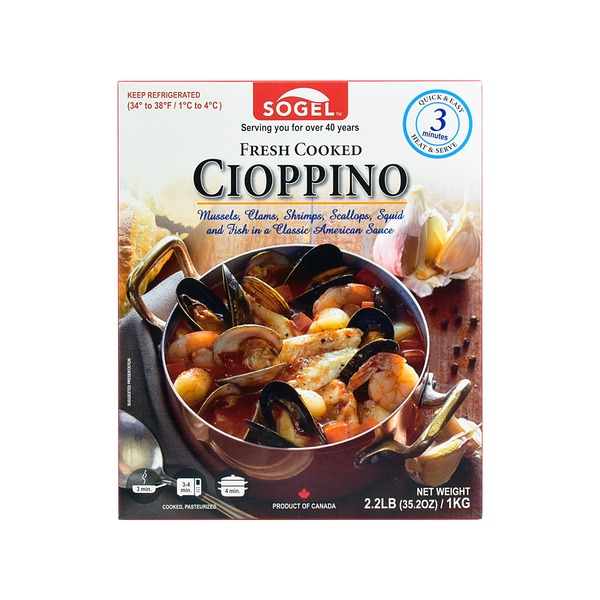Cioppino
Cioppino is a rich, flavorful seafood stew with roots tracing back to the San Francisco Bay area. Traditionally made with the catch of the day, typical ingredients include an assortment of seafood like shrimp, clams, mussels, crab and fish, cooked in a robust tomato-based broth and often served with crunchy sourdough bread.
A perfect dish for seafood lovers, it's a one-pot meal that's fairly easy to prepare at home. Though the recipe varies, key elements of garlic, onions, tomatoes, and Italian herbs are essential to achieve a complex and hearty depth of flavor. Delicious and satisfying, Cioppino truly allows seafood to shine.
19%
CARBS
13%
FAT
67%
PROTEIN
5 Cioppino Products
59 Recipes for Cioppino
Cioppino FAQ
What is Cioppino?
What ingredients are typically used in Cioppino?
Do I need to use fresh seafood for Cioppino?
What type of pot should I use to cook Cioppino?
Can I make Cioppino ahead of time?
Can I make substitutions to the seafood in Cioppino?
What are some common mistakes to avoid when cooking Cioppino?
How can I thicken or thin out the Cioppino stew?
Expiration & Storage Tips
When does Cioppino expire?
Cioppino, which is a rich, hearty seafood stew, is typically safe to consume for up to 48 hours once prepared when it's properly refrigerated. It is not typically a pre-packaged item that comes with a printed expiration date. If you've frozen your cioppino, it can last up to 4-6 months. However, it's best quality-wise if used within the first month of freezing.
How do you tell if Cioppino is bad?
Seafood, in general, will give clear signs that it has gone bad. Try smelling your cioppino; if it smells sour, yeasty or even like ammonia, it's likely spoiled. You might also notice a change in color, flavour, or consistency, if it's gone bad, such as seafood becoming mushy. When in doubt, always throw it out!
Tips for storing Cioppino to extend shelf life
• Always store your cioppino in the refrigerator within two hours of cooking to prevent bacterial growth.
• Use airtight, shallow containers to store your stew as it will cool down more quickly and reduces the risk of bacterial growth.
• For longer storage, portion out your leftover cioppino and freeze it. You can reheat directly from frozen or transfer it to the refrigerator to thaw overnight.
• Avoid refreezing a thawed cioppino to maintain food safety and quality.
Health Info
Macros
7g
CARBS
4g
FAT
24g
PROTEIN
Allowed on these diets
LOW FAT
MEDITERRANEAN
LACTOSE FREE
GLUTEN FREE
Contains these allergens
CRUSTACEAN SHELLFISH
FISH














